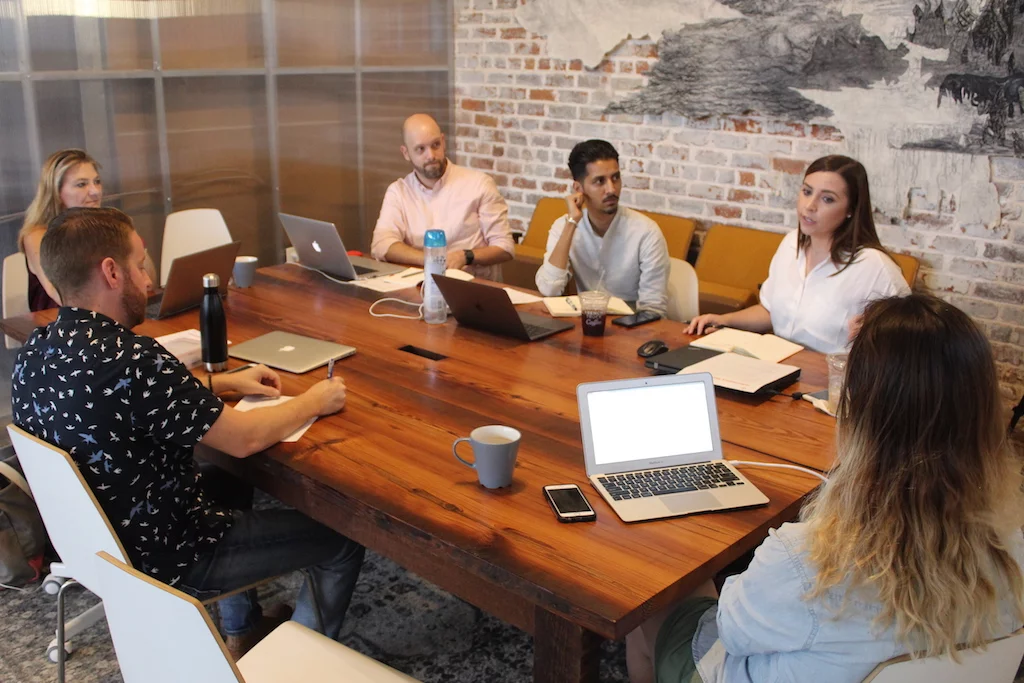Last month we had the pleasure of welcoming two of our client stakeholders to our office in New Orleans. Syed and Monique represent Organic Media and Web Marketing for our client, Informatica.
While we have a healthy meeting cadence in place (every week + additional topic-specific meetings each month) there were some important strategic topics that we just hadn't been able to cover.
As we talked about the importance of these topics we realized that they deserved serious time and attention. They couldn't be handled remotely or as "one-off" discussions.
Our client's boss, Gary, has a great saying:
It's all important. It's up to us to prioritize and make time.
In an amazing show of making time, Syed and Monique joined Tammy and Christian in New Orleans for an intensive 2 day SEO training workshop.
We covered quite a few topics, with the highlights being:
- Explanation of Content Silos as they relate to Informatica.com
- How search engines crawl a website or URL (complete with a New vs Old Google Search Console review)
- Workflow: Past, present and future
While the bulk of our conversation was specific to Informatica, there were a few topics that could be valuable to any SEO or Digital Marketer wanting to improve the Organic Search performance of their website.
Content Silos
Content silos are difficult to explain over the phone or a Webex meeting.
Due to many factors -- including the depth of products and solutions presented to visitors on Informatica.com -- Content Silos are becoming a really important.
Our fellow SEO Cyrus Shepard agrees with their importance, noting Content Silos as a Top 3 site architecture element to help your website rank better on Organic Search.
In our training session, Christian and Tammy decided to use _Sammiches _ (short for sandwiches, of course) as our Content Silo example.

What's the best way to explain the concept of Content Silos for websites?
With the overarching theme of Sammiches, of course!
- Content Silos begin with an overarching theme. In this case, we used Sammiches
- Categories and Subcategories fall under that theme. For example: Sammiches have cheese.
- Posts that live under the Subcategories can add more Sammich modifiers. In our example, Sammich cheese could be American, Swiss, Gouda ... you get the point.
Speaking of sammiches ... is it lunchtime yet? Nope? Only 9am? Ok, onwards to talk about how search engines crawl your website :)
How Search Engines Crawl a Website
Have you ever seen the code that returns when you crawl your own website?
Here's an example with our own homepage:

Actually visualizing what your website "looks like" to search engines is a useful exercise for Web Marketers, as they can see how company templates and code pushes are seen, crawled and indexed by search engines.
Now that we have a visual reference, we can follow Google's explanation for how they crawl and index content on your website:
- Google reviews previous crawls as well as sitemap's submitted by website owners
- Google then crawls your website (or part of it) again
- The search algorithms are looking for key signals — anything "from keywords to website freshness" — in order to update their index and rank your website/URL accordingly
There is an amazingly simple -- and effective -- video that explains the way search engines such as Google organize information on the Internet. You can watch it here: [https://www.google.com/search/howsearchworks/crawling-indexing/](https://www.google.com/search/howsearchworks/crawling-indexing/
For the folks who love a good visual, here is a humorous example of Web Crawlers, Googlebot and Web Content working together (Source: SEOTinker)

One of a Kind Experiences
New Orleans is 300 years old and history seeps out of every cobbled stone street, locals restaurant or pirate bar across the city.
That history led Syed, Christian and I to visit Aidan Gill for Men, a barbershop whose namesake has been a barber for nearly 50 years. Aidan's experience as a barber dates back to his start in Dublin, Ireland, when he began cutting hair at the young age of 15.
Before we began the training days, the guys went in to get a straight shave and haircut.
Wondering why everyone looks so happy and relaxed? Barbers at Aidan Gill for Men put on slow jazz music and work through seven hot towels on your face before giving their clients a shave. Show me an insomniac that can stay awake through that many relaxing hot towels ;)
Recognizing The Trip for What it Was: Work!
At our final dinner before everyone departed back home, I mentioned how inspiring it was to see key stakeholders take time and energy to make this training trip happen.
Everyone committed to the process of growing the SEO presence of Informatica.com
That's not something that a client and SEO agency can make happen every day. And I'm tremendously proud that we could make this happen.
By the way .... this is an annual work trip now, right? ;)






